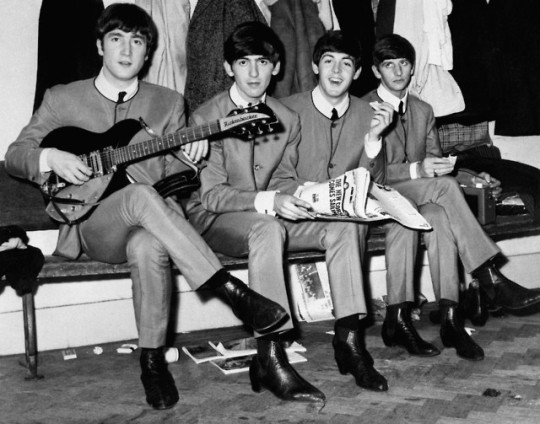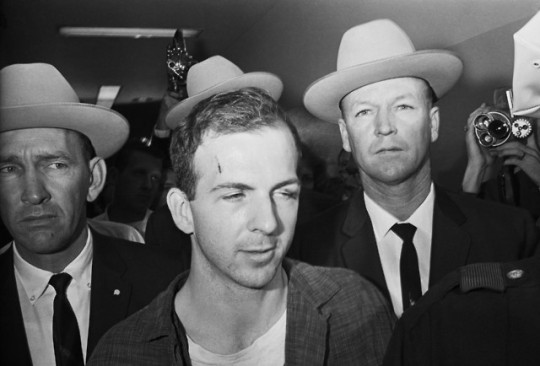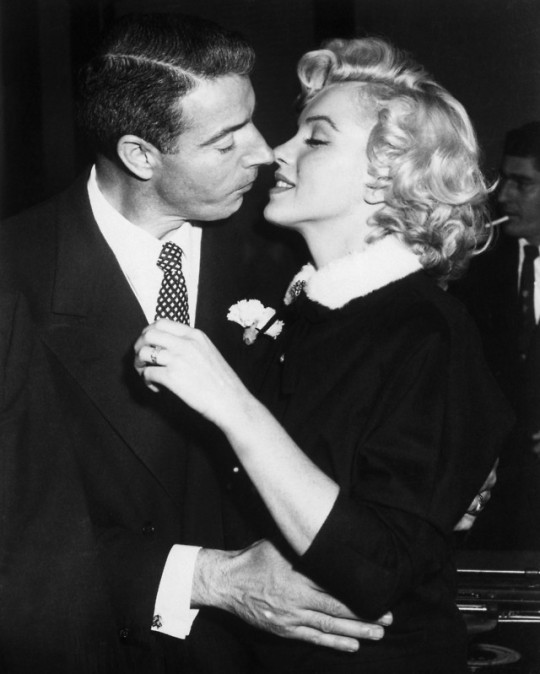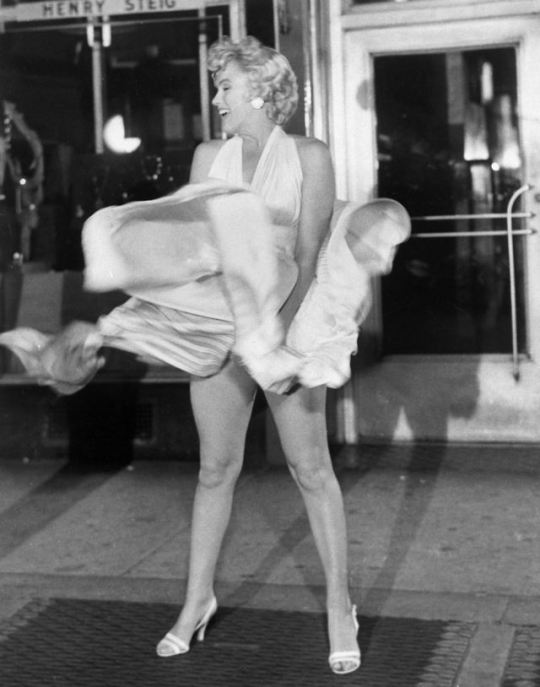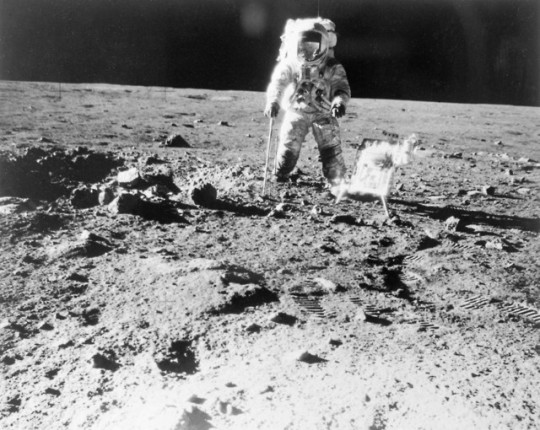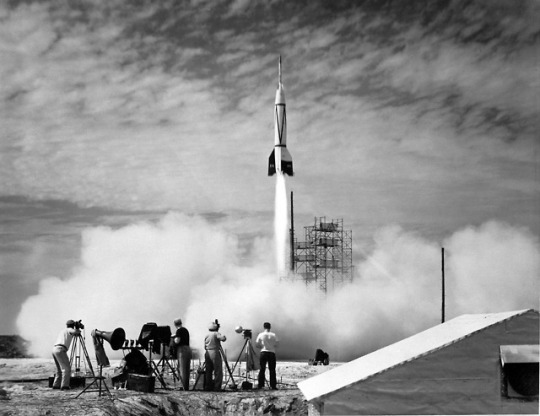#Bumper-WAC
Photo

July 24, 1950 - RTV-G-4 Bumper 8 launches at Cape Canaveral, the first launch from what was to become the United States’ premier space port and launch site for space exploration vessels and military ICBMs.
The Bumper program was developed in 1947, for the US to investigate techniques of launching and separating two-stage rockets and gain knowledge missile behavior at high-altitude and high-speed flight. The Bumper rockets were a modified WAC Corporal sounding rocket and German V2, brought over at the end of WWII with Wernher von Braun and his team. Eight Bumper rockets would be launched in total, the first six at White Sands Proving Grounds.
#nasa#spaceflight#history#cape canaveral#v2#WAC corporal#wernher von braun#early spaceflight#bumper 8#florida#1950#rocket#space#space race#missile
38 notes
·
View notes
Video
Bumper V-2 Launch
(July 24, 1950) A new chapter in space flight began in July 1950 with the launch of the first rocket from Cape Canaveral, Florida: the Bumper 8. Shown above, Bumper 8 was an ambitious two-stage rocket program that topped a V-2 missile base with a WAC Corporal rocket. Or in other words, it was a German V2 Rocket just without the warhead but with measurement equipment instead, e.g., a photo camera (which made the first picture of the Earth from space in history of humankind). The upper stage was able to reach then-record altitudes of almost 400 kilometers, higher than even modern Space Shuttles fly today. Launched under the direction of the General Electric Company, Bumper 8 was used primarily for testing rocket systems and for research on the upper atmosphere . Bumper rockets carried small payloads that allowed them to measure attributes including air temperature and cosmic ray impacts. Seven years later, the Soviet Union launched Sputnik I and Sputnik II, the first satellites into Earth orbit. In response, in 1958, the US created NASA . *Image Credit*: NASA Image Number: 66P-0631
#V2#rocket#NASA#space#WWII#bumper#Aviation#Aerospace#Spaceflight#National Aeronautics and Space Administration#Jet Propulsion Laboratory#JPL#Mittelwerk#A-4 Rocket#A-4 Missile#Vergeltungswaffe 2#V-2 Missile#V-2 Rocket#Douglas Aircraft Company#General Electric#GE#Douglas Aircraft#DAC#Guggenheim Aeronautical Laboratory#WAC#WAC Corporal#Bumper-WAC#Cape Canaveral#Rocket Launch#General Electric RTV-G-4 Bumper
54 notes
·
View notes
Photo

2018 October 1
The First Rocket Launch from Cape Canaveral
Credit: NASA
Explanation: A new chapter in space flight began in 1950 with the launch of the first rocket from Cape Canaveral, Florida: the Bumper V-2. Featured here, the Bumper V-2 was an ambitious two-stage rocket program that topped a V-2 missile base with a WAC Corporal rocket. The upper stage was able to reach then-record altitudes of almost 400 kilometers, higher than even International Space Station. Launched under the direction of the General Electric Company, the Bumper V-2 was used primarily for testing rocket systems and for research on the upper atmosphere. Bumper V-2 rockets carried small payloads that allowed them to measure attributes including air temperature and cosmic ray impacts. Seven years later, the Soviet Union launched Sputnik I and Sputnik II, the first satellites into Earth orbit. In response in 1958, 60 years ago today, the USA created NASA.
∞ Source: apod.nasa.gov/apod/ap181001.html
48 notes
·
View notes
Photo
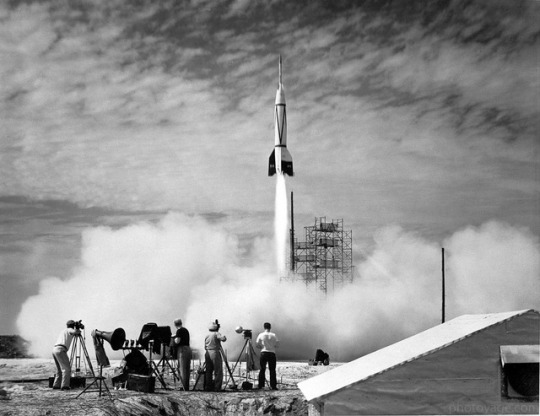
(July 24, 1950) A new chapter in space flight began in July 1950 with the launch of the first rocket from Cape Canaveral, Florida: the Bumper 8. Shown above, Bumper 8 was an ambitious two-stage rocket program that topped a V-2 missile base with a WAC Corporal rocket. The upper stage was able to reach then-record altitudes of almost 400 kilometers, higher than even modern Space Shuttles fly today. Launched under the direction of the General Electric Company, Bumper 8 was used primarily for testing rocket systems and for research on the upper atmosphere . Bumper rockets carried small payloads that allowed them to measure attributes including air temperature and cosmic ray impacts. Seven years later, the Soviet Union launched Sputnik I and Sputnik II, the first satellites into Earth orbit. In response, in 1958, the US created NASA . Image Credit: NASA
17 notes
·
View notes
Photo
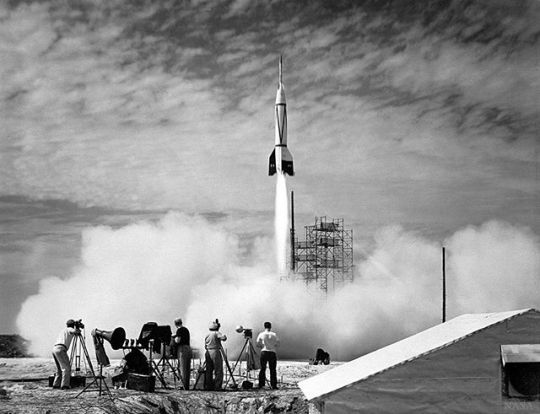
CAPE CANAVERAL'DAN İLK ROKET FIRLATILMASI⠀ ⠀ 1950 yılında Cape Canaveral’dan ilk roket, Bumper V-2 fırlatıldığında uzay uçuşunda yeni bir sayfa açıldı. Burada görülen Bumper V-2, bir V-2 füze tabanının üzerine bir WAC Corporal roketi yerleştiren iki aşamalı bir roket programıydı. Üst aşama o zaman için rekor olan 400 kilometre irtifaya, Uluslararası Uzay İstasyonu’ndan bile daha yükseğe ulaşabiliyordu. General Electric Şirketi’nin yönetimi altında fırlatılan Bumper V-2 asıl olarak roket sistemlerini test etmek ve üst atmosferdeki araştırmalar için kullanıldı. Bumper V-2 roketleri, hava sıcaklığı ve kozmik ışın çarpışmaları gibi özellikleri ölçmelerini sağlayan hafif yükler taşıyorlardı. Yedi yıl sonra Sovyetler Birliği tarafından Dünya yörüngesine ilk uydular, Sputnik I ve Sputnik II gönderildi. ABD de 1958 yılında buna cevap olarak, 60 yıl önce bugün NASA’yı oluşturdu.⠀ ⠀ Görsel: NASA⠀ ⠀ #apod #nasa #sky #space #astronomy #science #repost #gökyüzü #astronomi #uzay #bilim #uzaydanhaberler
3 notes
·
View notes
Video
youtube
What a #fun time, I wanted to share this with #everyone!
1 note
·
View note
Text
The First Rocket Launch from Cape Canaveral
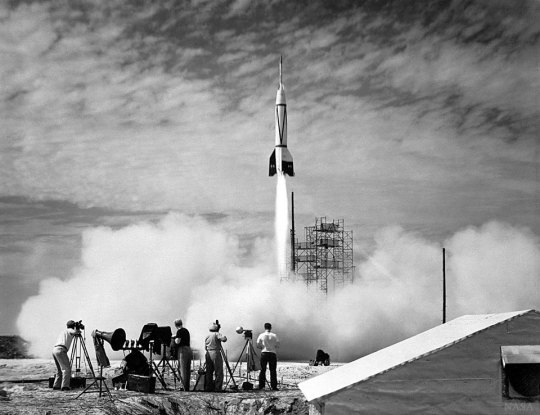
A new chapter in space flight began in 1950 with the launch of the first rocket from Cape Canaveral, Florida: the Bumper V-2. Featured here, the Bumper V-2 was an ambitious two-stage rocket program that topped a V-2 missile base with a WAC Corporal rocket. The upper stage was able to reach then-record altitudes of almost 400 kilometers, higher than even International Space Station. Launched under the direction of the General Electric Company, the Bumper V-2 was used primarily for testing rocket systems and for research on the upper atmosphere. Bumper V-2 rockets carried small payloads that allowed them to measure attributes including air temperature and cosmic ray impacts. Seven years later, the Soviet Union launched Sputnik I and Sputnik II, the first satellites into Earth orbit. In response in 1958, 60 years ago today, the USA created NASA. via NASA https://ift.tt/2DK5Jax
from WordPress https://ift.tt/2y2mx6d
via IFTTT
0 notes
Text
"The First Rocket Launch from Cape Canaveral" from NASA
“The First Rocket Launch from Cape Canaveral” from NASA
A sanity-defying image released by NASA.
The First Rocket Launch from Cape Canaveral
(more…)
View On WordPress
#APOD#astronomy#Cape Canaveral#Earth#Florida#International Space Station#NASA#Soviet Union#space#Sputnik I#Sputnik II#USA#WAC Corporal
0 notes
Photo
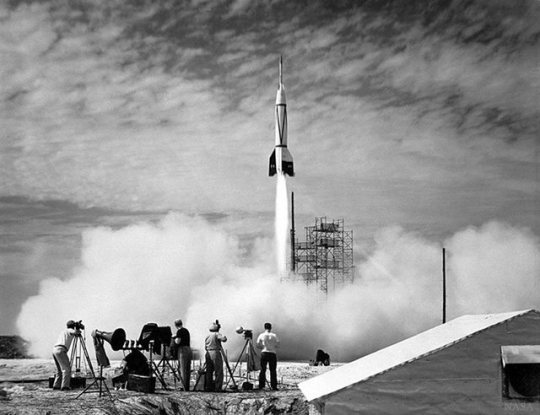
The First Rocket Launch from Cape Canaveral October 01, 2018 via NASA A new chapter in space flight began in 1950 with the launch of the first rocket from Cape Canaveral, Florida: the Bumper V-2. Featured here, the Bumper V-2 was an ambitious two-stage rocket program that topped a V-2 missile base with a WAC Corporal rocket. The upper stage was able to reach then-record altitudes of almost 400 kilometers, higher than even International Space Station. Launched under the direction of the General Electric Company, the Bumper V-2 was used primarily for testing rocket systems and for research on the upper atmosphere. Bumper V-2 rockets carried small payloads that allowed them to measure attributes including air temperature and cosmic ray impacts. Seven years later, the Soviet Union launched Sputnik I and Sputnik II, the first satellites into Earth orbit. In response in 1958, 60 years ago today, the USA created NASA. #NASA https://go.nasa.gov/2OiusH1
0 notes
Link
Explanation: A new chapter in space flight began in 1950 with the launch of the first rocket from Cape Canaveral, Florida: the Bumper V-2. Featured here, the Bumper V-2 was an ambitious two-stage rocket program that topped a V-2 missile base with a WAC Corporal rocket. By https://apod.nasa.gov/apod/ap181001.html
0 notes
Link
Explanation: A new chapter in space flight began in 1950 with the launch of the first rocket from Cape Canaveral, Florida: the Bumper V-2. Featured here, the Bumper V-2 was an ambitious two-stage rocket program that topped a V-2 missile base with a WAC Corporal rocket. via Pocket
0 notes
Photo
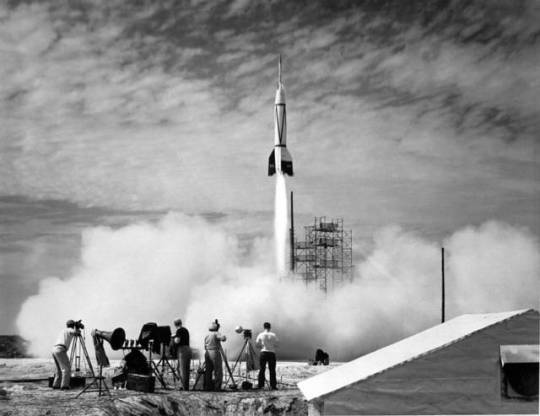
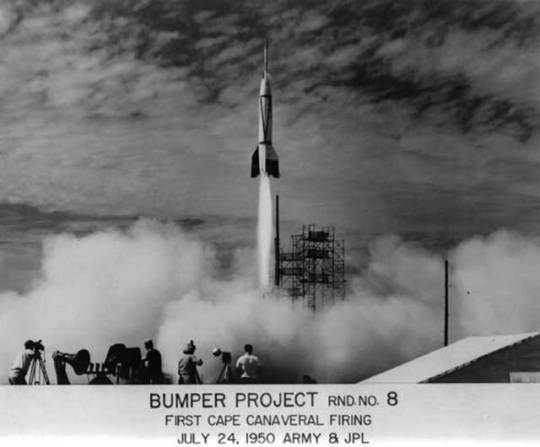
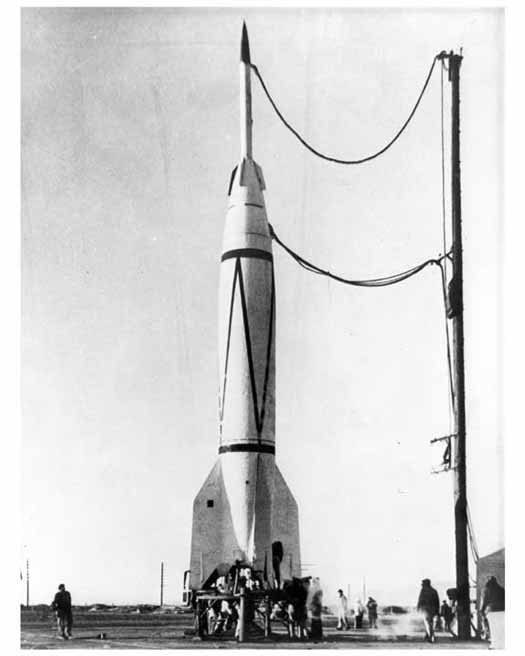
Beelden van de Bumper Wac raket, een van de voorlopers van de Saturn V
(NASA)
0 notes
Photo

Bumper Wac Liftoff
by NASA/Marshall Space Flight Center
Publication date 2/24/1950
Topics Where -- Florida, Where -- New Mexico
Bumper Wac liftoff at the Long Range Proving Ground located at Cape Canaveral, Florida. At White Sands, New Mexico, the German rocket team experimented with a two-stage rocket called Bumper Wac, which intended to provide data for upper atmospheric research. On February 24, 1950, the Bumper, which employed a V-2 as the first stage with a Wac Corporal upper stage, obtained a peak altitude of more than 240 miles.
Identifier MSFC-0100059
Insightuid nasaNAS~9~9~57959~161803
Rights Public Domain
Source http://mix.msfc.nasa.gov/abstracts.php?p=1176
Where Florida
Year 1950
0 notes
Text
#TheBlack14 #Race #Politics #Religion and #WyomingFootball by #PhilWhite
The Black 14: Race, Politics, Religion and Wyoming Football
Phil White
The Black 14: Race, Politics, Religion and Wyoming Football
Published:
November 8, 2014
During the second period of the season-opening football game against Arizona on Sept. 20, 1969, a packed house at the University of Wyoming's War Memorial Stadium watched as Cowboys' split end Ron Hill, a sophomore from Denver, caught a pass and took it 24 yards into the end zone. It was Wyoming's first touchdown in the 100th anniversary year of college football.
The University of Wyoming Cowboys near the start of the 1969 season. UW American Heritage Center.
In the third quarter, Jay Berry—then called Jerry Berry—a sophomore safety from Tulsa, Okla., intercepted an Arizona pass on his own 12-yard line and returned it 88 yards for another touchdown.
But these football triumphs faded quickly from public memory when a controversy that fall linking sports, race, religion and protest politics swung the nation’s news spotlights to Laramie, Wyoming at a time when Americans were already deeply divided over civil rights and the Vietnam War. Controversy erupted over the expulsion of 14 African-American football players from the Cowboys’ varsity. They came to be known as the Black 14.
A Winning Team
The Cowboys opened the season by defeating Arizona, the Air Force Academy, Colorado State University and the University of Texas at El Paso, and were ranked 12th in the nation in the United Press International coaches poll as the players prepared for their next game against Brigham Young University. The UW team led the nation in rushing defense.
Ten members of the Black 14 at the University of Wyoming, fall, 1969. Front center: Earl Lee Second row l-r: John Griffin and Willie Hysaw; Third row l-r: Don Meadows and Ivie Moore; Fourth row l-r: Tony Gibson, Jerry Berry and Joe Williams; Fifth row l-r: Mel Hamilton and Jim Issac. Not shown are Tony Magee, Ted Williams, Lionel Grimes and Ron Hill. University of Wyoming photo.Lloyd Eaton coached Wyoming football from 1957 through 1970. He was head coach beginning in 1962. UW photo service.Under Head Coach Lloyd Eaton, Wyoming had won three consecutive Western Athletic Conference championships in the three previous years; had won 31 of the previous 36 games; defeated Florida State in the Sun Bowl and very nearly upset Louisiana State University in the Sugar Bowl on Jan. 1, 1968, after going undefeated during the 1967 regular season.
The 51-year-old Eaton, a native of Belle Fourche, S.D. was at the peak of his career. On Oct. 11, 1969, the Madison, Capital Timesreported that Wisconsin Athletic Director Elroy Hirsch was considering Eaton as a candidate for the Big Ten team's next coach.
But on Friday morning, Oct. 17, 1969, the day before the BYU game, Eaton summarily dismissed Hill, Berry and the 12 other African-American players on the UW team when they appeared at his office as a group wearing black armbands on their civilian clothes. BYU is owned and operated by the Church of Jesus Christ of Latter-day Saints, better known as the Mormons. By wearing the armbands, the players were protesting the LDS policy then in force, which barred black men from the priesthood.
The coach's action deeply affected the players’ lives, and soon caused the demise of his own coaching career. The university, too, was profoundly affected.
A turbulent time
The controversy came at the end of the turbulent 1960s. The decade profoundly changed the nation but had apparently had less of an effect, so far, on conservative Wyoming. In 1968, the Tet Offensive had shown Americans no quick end was likely for the Vietnam War, a politically damaged president, Lyndon Johnson, had declined to run for re-election, MartinLuther King and Robert Kennedy were assassinated and protest spread wider and wider across campuses and capitals.
In October of that year, U.S. sprinters Tommie Smith and John Carlos indelibly linked sports to racial politics when, standing on the medalists’ platform at the Summer Olympics in Mexico City, they raised black-gloved fists as The Star-Spangled Banner played over the loudspeakers.
In the western United States, some college athletes learned of the Mormon Church’s policy of barring black men from the church’s lay priesthood and thus from leadership in the church. The students felt they could bring attention to what they saw as an injustice by protesting when their teams played Brigham Young University. BYU, located in Provo, Utah, is wholly owned and operated by the Mormon Church.
In November 1968, at San Jose State in California, black football players boycotted a home game against BYU, and only 2,800 fans “braved threats of disruption and demonstration” to come to the game, BYU’s football media guide noted the following year. In April, 1969, black track athletes at the University of Texas at El Paso were ejected from the team when they refused to participate in a meet at Provo. On Oct. 6, an Associated Press story in Wyoming newspapers reported that an Arizona State black student group had asked black students to boycott the Sun Devils' Western Athletic Conference game against BYU that week because of alleged discrimination against blacks at BYU.
Protest comes to Laramie
About a week before the UW-BYU game, slated to be played on UW home turf in Laramie, Willie Black, a 32-year-old math doctoral student with a wife and four children living in student housing, had learned of the Mormon policy. Black was chancellor of UW’s Black Students Alliance. On the Monday before the game, he informed alliance members, including the black football players, of what he had discovered. On Wednesday, he delivered a statement entitled "Why We Must Protest" to the UW president and athletic director. The document announced plans for a demonstration at the stadium before the BYU game.
Mathematics doctoral student Willie Black, left, was chancellor of the Black Student Alliance. American Heritage Center."Our Humanity Demands: . . . That all people of good will--whatever their color--athletes included" protest this policy, the document noted. Further, it called on UW and all WAC schools to stop using "student monies and university facilities to play host to [BYU and] thereby, in part, sanction those inhuman and racist policies. . . ."
Also on Wednesday, Laramie townspeople and students took part in the Vietnam Moratorium, a nationally coordinated series of demonstrations and teach-ins. It was the largest set of antiwar protests the nation—and Laramie—had seen so far.
After practice on Thursday afternoon, Oct. 16, Coach Eaton warned Wyoming's tri-captain Joe Williams about the coach’s rule prohibiting participation by athletes in demonstrations. Williams conveyed this information to his fellow black players that night, and they decided to meet with Eaton to discuss the issue.
About 9:15 a.m. on Friday, the 14 black players gathered at Washakie Center in the dormitory complex. They donned black armbands and walked to Memorial Fieldhouse where Eaton had his office, hoping to persuade the coach to allow them to show some solidarity with the BSA call for a protest.
Seeing them together, wearing armbands, Eaton led them into the upper seating area of the fieldhouse and, according to the players, immediately told them that they were all off the team. After that, according to the wife of a faculty member who was walking on the fieldhouse floor below, the coach insulted the players in an angry manner, which further polarized the situation.
"It was pretty belligerent talk," Ann Marie Walthall recalled more than 20 years later in a documentary on the Black 14 produced by University of Wyoming Television. "I felt embarrassed for the young men hearing this tirade."
Eaton would later testify in federal court that he "told them that if the program at Wyoming was not satisfactory then perhaps they had better think about going to Morgan State or Grambling”—both traditional black colleges.
The players emptied their lockers and walked to the student union. They asked UW President William Carlson to arrange a meeting with Eaton at Old Main. In the afternoon, the players met with Carlson, Athletic Director Red Jacoby and student leaders, but Eaton did not appear.
That evening, the coaches and players met separately with the UW Board of Trustees and Wyoming GovernorStanley K. Hathaway during a special meeting lasting from 8 p.m. to 3:15 a.m. Saturday. At that late hour, the university issued a press release saying the trustees confirmed the dismissal of the 14 players. The players "will not play in today's game or any during the balance of the season,” the press release noted, and added: "The dismissals result from a violation of a football coaching rule Friday morning."
Support for the 14 dismissed players was widespread on the UW campus. American Heritage Center.Support for Coach Eaton was also widespread, and bumper stickers like this were common. Branding Iron Collection, American Heritage Center.Athletic Director Jacoby further noted in the release that "(a)mple notice was given to all members of the football team regarding rules and regulations of the squad, some of which cover a ban on participation in student demonstrations of any kind. Our football coaching staff has made it perfectly clear to all members of the team that groups, or factions, will not be tolerated and that team members will be treated as individuals.”
According to Jacoby, the staff had “no recourse” when the 14 players appeared as a group at the coach's office. “We had no choice but to drop them from the squad. It is unfortunate this happened, but an open defiance of a coaching staff regulation cannot be tolerated."
On Saturday, the Cowboys, suddenly an all-white team, defeated all-white BYU 40-7 while the 14 dismissed black players watched from the student section of the stands. Fans on both sides of the stadium chanted, "We love Eaton." After the game, Eaton said, "The victory was the most satisfying one I've ever had in coaching."
The players
Statistics published in the program for the game showed that the 14 African-American players had contributed substantially that year to the team's unbeaten status through the first four games. John Griffin, a junior college transfer from San Fernando, Calif., was the leading receiver; Ron Hill of Denver led in kickoff returns; and Joe Williams of Lufkin, Texas, and Tony Gibson were third and fourth, respectively, in rushing. Ted Williams, another transfer from Port Hueneme, Calif., relieved the injured Joe Williams (no relation) in the CSU game and rushed for 87 yards to lead the Cowboys' ground attack.
Mel Hamilton, a junior and a former mayor of Boys Town, Neb., had moved into a starting position in the offensive line, and Gibson, a junior from Pittsfield, Mass., started at fullback in the UTEP game. Ivie Moore, a Pine Bluff, Ark., defensive back who transferred from a Kansas junior college, was listed as a starter for the BYU game.
Defensive end Tony McGee, a junior from Battle Creek, Mich., had keyed the Cowboys' thrilling come-from-behind win at the Air Force Academy by tackling the AFA quarterback for losses seven times.
Only one of the 14 was a senior at the time of their dismissal. Two—Mel Hamilton and Earl Lee—had already served in the U.S. Army. Half of them were under 21 years old.
The national spotlight
The dismissal of the 14 brought camera crews from the three big TV networks to Laramie, and articles appeared in newspapers and magazines throughout the nation. The Nov. 3, 1969, issue of Sports Illustratedcarried an article whose photographs included one showing 10 of the dismissed players sitting on the south steps of the Wyoming Union. The Casper, Wyo. Quarterback Club, the Rock Springs Wyo. City Council and the University of Wyoming Alumni Association supported the coach.
Aside from some of the students, the Denver Post and the student newspaper at UW, one of the few expressions of concern for the dismissed players, ironically enough, was an unnamed source close to the BYU Board of Trustees quoted in the Oct. 24, 1969, issue of the Denver Post.
"It's most disturbing,” said the source, “to think that the Negro athletes at Wyoming could lose their education."
Aftermath
Early in 1969, the Wyoming Legislature had adopted a law allowing the UW student body president to sit as an ex-officio member of the Board of Trustees. This allowed Associated Students of the University of Wyoming President Hoke MacMillan to sit in on all of the board’s sessions that Friday night and early Saturday morning.
Click to enlarge | The Black Student Alliance issued this statement calling for protests the Wednesday before the BYU game in October, 1969. Irene Schubert Collection, American Heritage Center.Click to enlarge | The press release issued by the UW trustees at 3:15 a.m. Oct. 18, 1969. American Heritage Center. Author's collection.In response to the dismissals, the UW Student Senate, with MacMillan fully involved, adopted a resolution by a 15-3 vote alleging that “coach Eaton refused to grant a rational forum for discussion, choosing instead to degrade and arbitrarily dismiss each player....” The resolution said the ASUW Senate "expresses its shock at the callous, insensitive treatment afforded 14 Black athletes. . . .[T]he actions of coach Eaton and the Board of Trustees were not only uncompromising, but unjust and totally wrong."
On the Wednesday after the game, Eaton and Carlson appeared at an on-campus news conference to announce that the coach's rule prohibiting student athletes from participating in demonstrations was being amended to apply only while on the playing field. When Eaton was asked if the dismissal of the 14 would have happened if the now-modified rule had been in effect the previous week, he left the press conference, the Associated Press reported the next day. The UW student newspaper, the Branding Iron, published an editorial advocating reinstatement of the players because the no-demonstrating rule had now been withdrawn.
English professor Ken Craven stated at the October 19 faculty meeting that he would resign if the players were not reinstated. Some of the other UW faculty members supported the coach, however.
During the week after the BYU game, four black trackmen—Huey Johnson and Grady Manning of Chicago, Mike Frazier of Pueblo, Colo., and Jerry Miller of Battle Creek, Mich.—quit the team and left UW in protest of the football players’ dismissals. Two of them had been conference champions in their main events the previous year.
The Cowboys finished their home slate with a victory over San Jose State a week after the BYU game. A plane pulling a banner proclaiming, "Yea Eaton," flew over the stadium, and the crowd responded with a roar and a standing ovation. Many wore "Eaton" armbands. All of the SJS players wore either black or multi-colored armbands.
0 notes
Video
youtube
What a fun time, I wanted to share this with everyone!
0 notes
